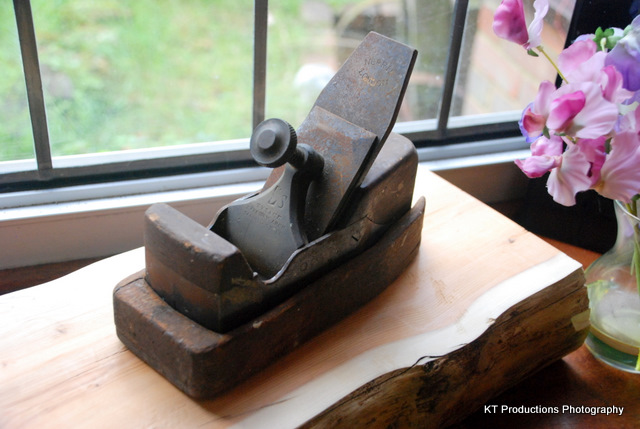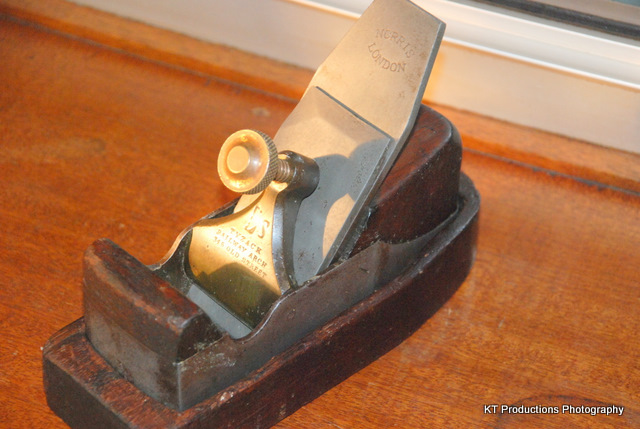I was pleased to find that I'd won an eBay auction for what looked like a decent assortment of old woodworking tools and collected them from the seller this week. Rather than just gloat about them, I thought I would show some more pictures of the very simple cleaning and restoring that I will do.
So, first up, we have an ebony and brass mortice gauge and a sixpenny brace. This is how they were:


Dirty from a shed or an attic, with the steel parts lightly rusted, enough to make your hands turn orange - not nice to use.
However, they are a century or more old, and I don't want them to look new, just cared for. Following advice from others on here, (mostly Jim!) and from TATHS members, I have finally bought a little pot of "Renaissance" brand microcrystalline wax, and that's what I used on these.
The first step was just to rub the loose dirt off with an old hand towel and a toothbrush, used dry. Nothing difficult there!
The next step was to use a tiny smear of the wax on a bit of rag on the end of my finger, and gently rub the dirt away. You can see the dirt coming off on the rag, but it doesn't remove any of the surface of the metal or wood. I also put a tiny rub of wax along the moving surfaces, which helped the adjuster move properly smoothly.
This is the mortice gauge adjuster before:

and after:

The head half way through:

all finished:

The brace before:

On this rust, I used the wax on some superfine steel wool. This is cleaned on the right hand side:

and further along:

On the wooden head I just used a soft cloth and a smear of wax. Before:

After:

This was all ridiculously quick and easy to do. The end result is just what I wanted; they still look old, but are clean and pleasant to touch. Other brands of microcrystalline wax are available, but I am sure this little tub will last me years and years so I don't plan to do a side by side test.
However, I will do some more posts on some of the other contents of the box, but it may be a while. Someone seems to have left an unfinished step/chair on the bench and it's slowing down my progress!
So, first up, we have an ebony and brass mortice gauge and a sixpenny brace. This is how they were:


Dirty from a shed or an attic, with the steel parts lightly rusted, enough to make your hands turn orange - not nice to use.
However, they are a century or more old, and I don't want them to look new, just cared for. Following advice from others on here, (mostly Jim!) and from TATHS members, I have finally bought a little pot of "Renaissance" brand microcrystalline wax, and that's what I used on these.
The first step was just to rub the loose dirt off with an old hand towel and a toothbrush, used dry. Nothing difficult there!
The next step was to use a tiny smear of the wax on a bit of rag on the end of my finger, and gently rub the dirt away. You can see the dirt coming off on the rag, but it doesn't remove any of the surface of the metal or wood. I also put a tiny rub of wax along the moving surfaces, which helped the adjuster move properly smoothly.
This is the mortice gauge adjuster before:

and after:

The head half way through:

all finished:

The brace before:

On this rust, I used the wax on some superfine steel wool. This is cleaned on the right hand side:

and further along:

On the wooden head I just used a soft cloth and a smear of wax. Before:

After:

This was all ridiculously quick and easy to do. The end result is just what I wanted; they still look old, but are clean and pleasant to touch. Other brands of microcrystalline wax are available, but I am sure this little tub will last me years and years so I don't plan to do a side by side test.
However, I will do some more posts on some of the other contents of the box, but it may be a while. Someone seems to have left an unfinished step/chair on the bench and it's slowing down my progress!



































